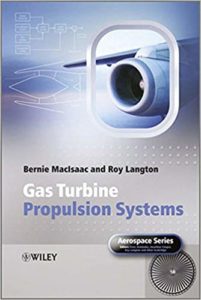Gas Turbine Propulsion Systems
Gas Turbine Propulsion Systems
Gas Turbine Propulsion Systems is organized to provide the reader with a basic understanding of how a gas turbine works, with emphasis on those aspects of its operation which most affect the task of the system designer. We have attempted to cover the propulsion package as a combination of functional components that must operate properly in unison to produce power.The gas turbine has found application in a number of important non-aeronautical industries. These include pipeline compressor drives, electrical power generation and naval propulsion systems. From a systems design perspective, the naval application is arguably
the most demanding.
You can also Read Maintainability Maintenance and Reliability for Engineers
Gas Turbine Propulsion Systems
- About the Authors
![Gas Turbine Propulsion Systems]()
- Preface
- Series Preface
- Acknowledgements
- List of Acronyms
- Introduction
- Basic Gas Turbine Operation
- Gas Generator Fuel Control Systems
- Thrust Engine Control and Augmentation Systems
- Shaft Power Propulsion Control Systems
- Engine Inlet, Exhaust, and Nacelle Systems
- Lubrication Systems
- Power Extraction and Starting Systems
- Marine Propulsion Systems
- Prognostics and Health Monitoring Systems
- New and Future Gas Turbine Propulsion System Technologies
- A: Compressor Stage Performance
- B: Estimation of Compressor Maps
- C:Thermodynamic Modeling of Gas Turbines
- D: Introduction to Classical Feedback Control
- Index
There are many books available that describe gas turbine engines, focusing primarily on the ‘turn and burn’ machinery from an aero-thermodynamic perspective. Typically, the coverage given to the peripheral systems that support the complete gas turbine propulsion system is either not described at all or is often superficial. As the industry continues to demand improvements in performance and reductions in weight, the engine continues to be refined and, in some instances, made more complex. The system engineer can therefore expect to be working on not only more refined control systems but also information management systems designed to keep ownership costs as low as possible.


Comments are closed.